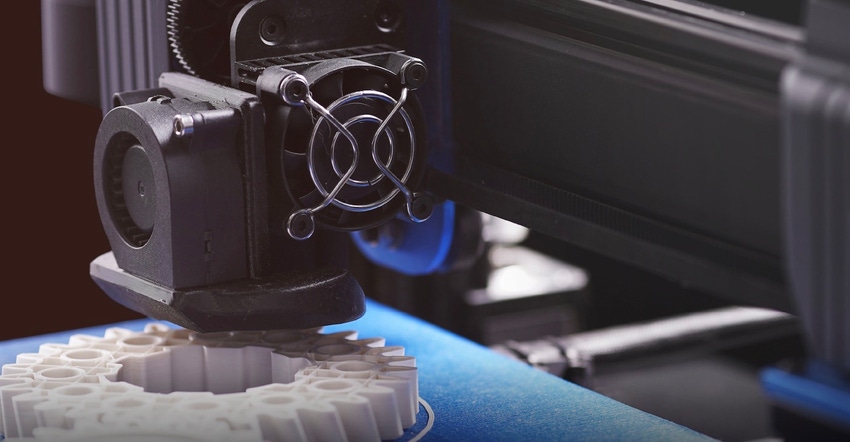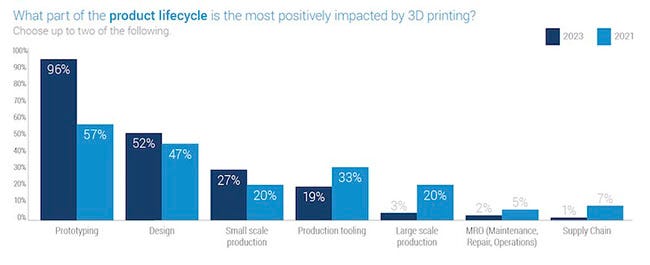Prototyping Remains Primary Application of Additive Manufacturing, Says Industry Survey
The survey commissioned by Jabil also found continued growth in the use of 3D printing for production parts.
August 16, 2023

Prototyping remains the predominant use of additive manufacturing, according to a survey of 200 mid- to senior-level decision makers who oversee additive manufacturing within their organizations. While the survey commissioned by design engineering, manufacturing, and supply chain services company Jabil revealed that a majority of respondents continue to use the technology for prototyping purposes, it also showed consistent growth since 2017 in the use of 3D printing for production parts, bridge production, and jigs, fixtures, and tooling.
|
Prototyping remains the primary application of 3D printing, according to a survey of decision makers who oversee 3D printing within their organizations. |
Additional key findings of the survey include:
Companies with more than 100 3D printers are more likely to use the technology to repair products.
96% of participants use in-house 3D printing, but outsourcing is still typical, especially with additive networks and contract manufacturers.
Prototyping is also widely recognized as the area most benefited by additive manufacturing (selected by 96% of respondents), followed by design (52%) and small-scale production (27%).
Plastics/polymers remain the leading materials used in additive manufacturing among 97% of those polled.
Between plastics and metals, two-thirds of participants indicate their company uses plastics most often.
Almost all respondents (96%) said their organization would want to use metal additive materials if certified versions were available at a reasonable cost, followed closely by plastics/polymers (88%).
Two-thirds of participants say that their organizations utilize custom-engineered materials.
Seven in 10 decision makers expect moderate growth of 3D printing for their company in the next two to five years; this contrasts with “significant” growth reported in previous surveys.
97% of participants say that their organization uses 3D printing to produce functional or end-use parts.
74% of survey participants printed at least 10,000 parts last year, while 36% polled printed up to 100,000 parts in that same timeframe.
While participants aren’t as bullish on overall 3D printing industry growth, they are expecting larger growth in the use of 3D printing for production parts or goods in the next three to five years.
Issues with the cost and availability of materials are extremely prevalent, noted by 85% of decision makers, increasing 31% from 2021.
Material costs mentioned as a financial barrier to additive manufacturing rose from 18% to 79% since the 2021 survey.
In addition to material costs, processing and system equipment costs are all significant challenges organizations face.
While almost all respondents described the expected benefits of 3D printing, the most frequent benefit discussed was faster part delivery timelines.
More than half of those surveyed (55%) say that their company’s top leadership recognizes additive manufacturing as a strategic capability.
About the Author(s)
You May Also Like





